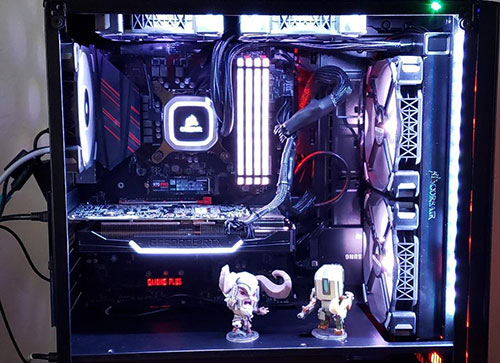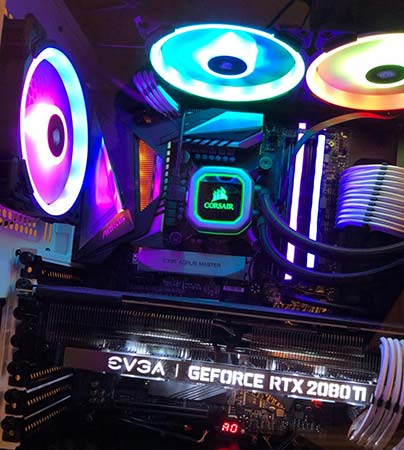
Do you really need the best graphics card on the market?
Will you be fine running the GTX 1070, or do you need something more powerful like the RTX 2080 Ti?
If money is no issue, go with the best graphics card possible. But if you have the best graphics card, you’ll also need the best CPU so that you can reduce the chance of a bottleneck occurring.
When you learn how to pick the right graphics card, you’ll realize one thing: it’s budget dependent.
You may even decide that the RTX 2080 Ti is the right choice for you, but then you’ll find 6-7 manufacturers offering the same card with subtle differences in:
- Clockspeed
- Warranty
- Price
- Overclocking options
If you’re scratching your head wondering which is the best to do, you’re not alone – it’s a lot to absorb.
A few of the things you’ll want to consider are:
- Size. You may be running with a large ATX case, so size won’t matter. But size does matter when a larger graphics card will take up two adjacent PCIe connections. This becomes an issue with smaller, micro-ATX cases.
- Connections. What connections do you need? Older monitors will require a DVI-D connection, but you may need multiple DisplayPort options to accommodate support for multiple monitors. HDMI and DisplayPorts are pretty much standard in all newer graphics cards.
- PSU. Can your current PSU support the required PSU by the graphics card? Since a graphics card is known to hog energy, you may need to upgrade. You’ll also want to consider your connectors. You may need two 8-pin connectors, but your PSU doesn’t have two, so you’ll need to upgrade.
Keep in mind that at the high-end, you may have 5% – 10% differences in cards for a 20% higher price. You need to justify these costs. If you play MMORPGs, you may not need to spend more on a card that is faster because you won’t be able to utilize the excess power.

A few things to keep in mind:
- Clockspeed. The clockspeed may not mean much, or it may. Overclocking is especially important because it will produce more speed and require more energy. Some manufacturers, especially MSI, allow for impressive overclocking speeds that keep the card stable and allow you to reach the same performance as those cards that offer the 10% increase we discussed a paragraph ago.
- Cores. Cores matter when all things are created equal, but if there is real-time ray tracing or games that don’t support multiple cores, they may not matter much.
- Noise. A lot of newer cards will keep noise to 0 dB when they’re at lower loads, making them very quiet. But when they run, the noise production may be very high.
There’s also warranty and support concerns. Cards, when they’re defective, will often go bad within the first few months, meaning a year warranty will suffice. But there’s always the benefit of a longer warranty so that you can return the card if an issue happens a year or two into usage.
Support is equally as important because a lot of manufacturers have support that never responds. They’re horrible at responding (when you call no one ever picks up the phone), and even getting an email response is near-impossible.
I also recommend checking out benchmarks online.
Benchmarks will help you compare different cards to see how they perform for your favorite games. Oftentimes, you’ll find that the manufacturer difference for some cards is 10% better for around the same price (when you’re choosing the same card model, but from one of the various manufacturers available).
